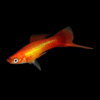To provide the best experiences, we use technologies like cookies to store and/or access device information. Consenting to these technologies will allow us to process data such as browsing behaviour or unique IDs on this site. Not consenting or withdrawing consent, may adversely affect certain features and functions.
The technical storage or access is strictly necessary for the legitimate purpose of enabling the use of a specific service explicitly requested by the subscriber or user, or for the sole purpose of carrying out the transmission of a communication over an electronic communications network.
The technical storage or access is necessary for the legitimate purpose of storing preferences that are not requested by the subscriber or user.
The technical storage or access that is used exclusively for statistical purposes.
The technical storage or access that is used exclusively for anonymous statistical purposes. Without a subpoena, voluntary compliance on the part of your Internet Service Provider, or additional records from a third party, information stored or retrieved for this purpose alone cannot usually be used to identify you.
The technical storage or access is required to create user profiles to send advertising, or to track the user on a website or across several websites for similar marketing purposes.















Emily Carter (verified owner) –
I recently purchased 4 Green Wagtail Swordtails, and I couldn’t be happier with my choice! As a passionate fish parent, I always prioritize the health and happiness of my fish, and these beauties have exceeded my expectations. After about two weeks in my 50-gallon freshwater tank, they’ve settled in beautifully and are thriving. Their vibrant colors and lively swimming patterns bring such joy to the aquarium.
These social fish are perfect for community tanks, as they get along wonderfully with my other tropical fish. I appreciate that they are livebearers, which allows me to witness the beauty of life in my tank. I had previously tried another brand, but the quality and vitality of these swordtails really stand out. One minor concern was that a couple of them were a bit shy at first, but they quickly became comfortable in their new environment.
If you’re looking to add some personality and color to your aquarium, I highly recommend these swordtails for both new and experienced aquarists. They make an excellent addition to any freshwater setup and truly brighten up the tank. I would definitely buy from this seller again!
Emily Carter (verified owner) –
I recently added 4 Green Wagtail Swordtails to my community tank, and I couldn’t be happier! These beautiful fish not only enhance the aesthetic of my aquarium with their vibrant colors and lively movements, but they also have such a wonderful temperament. Having kept tropical fish for over two years, I can confidently say these swordtails are perfect for both beginners and seasoned hobbyists. After about two weeks, I noticed how well they integrated into my tank, swimming happily among my other species without any signs of stress.
One thing I appreciate is their hardiness; they adapt well to various water conditions, which is a relief for a caring fish parent like me. I’ve seen them thrive on a balanced diet of flakes and occasional veggies, and they love to explore the plants I’ve added!
A minor concern was their initial shyness, but with time and patience, they’ve really come out of their shells. I highly recommend these swordtails, especially for anyone looking to create a vibrant community tank. They truly bring joy and life to my aquarium!